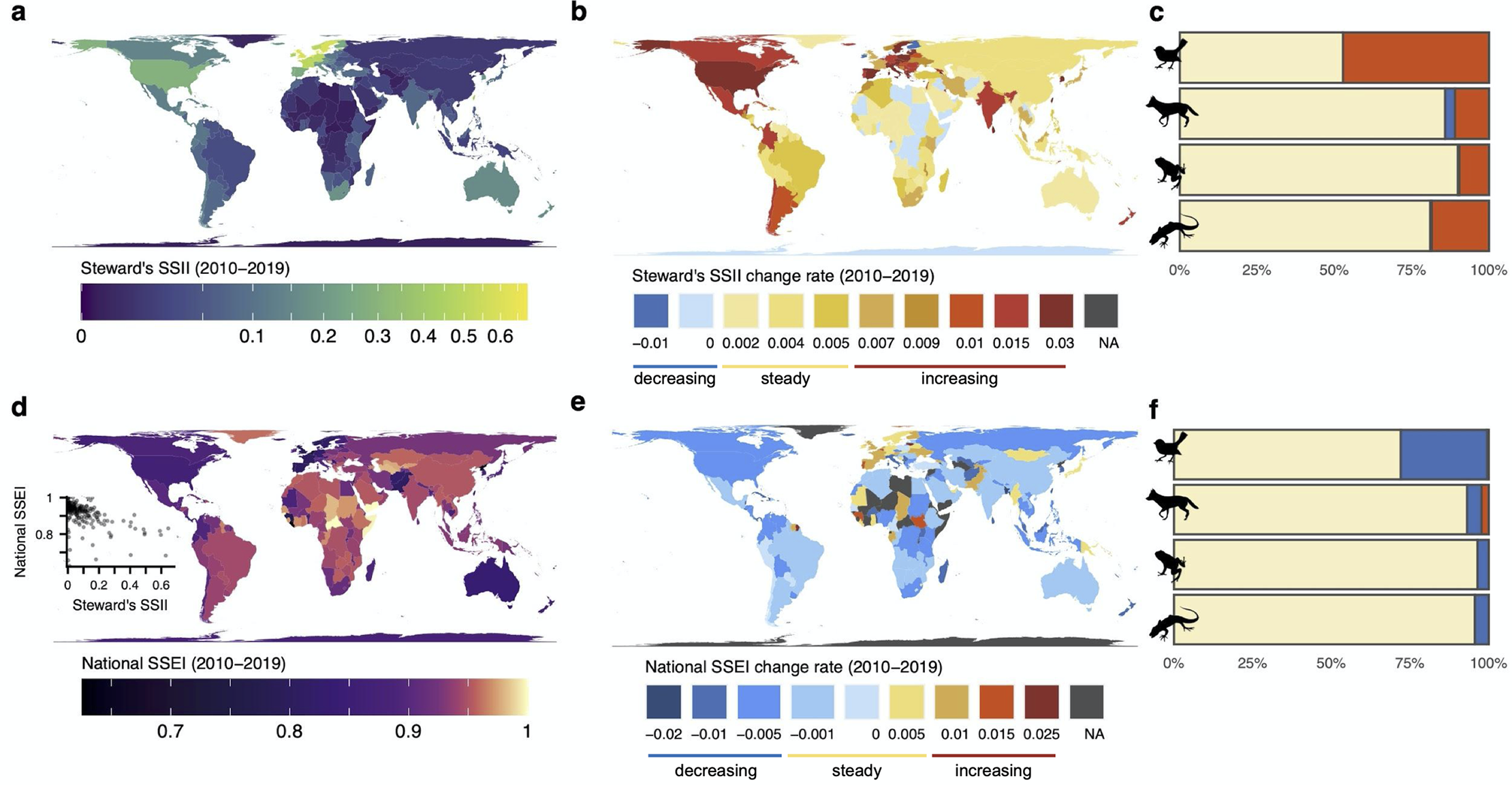New publication by Ruth Y. Oliver, Carsten Meyer, Ajay Ranipeta, Kevin Winner, and Walter Jetz, in PLOS Biology
The post-2020 global biodiversity framework relies critically on the documentation and monitoring of species distributions and changes over time. Fortunately, global and national biodiversity records data have exploded in the last two decades. However how effective is our current biodiversity evidence base at informing and tracking a nation’s progress towards closing spatio-temporal biodiversity data gaps? Oliver et al. (2021) provide two metrics – scalable to national and global levels – capable of doing just that.
Read about the Map of Life Species Status Information Index (SSII) and the Species Sampling Effectiveness Index (SSEI) and how they can be used to better focus biodiversity data collection, as well as their global assessment of trends in data coverage and sampling effectiveness since 1950 for over 31,000 terrestrial vertebrate species and over 450 million verified species occurrence records.

Fig 4. from Oliver et al. 2021. National patterns and trends in spatial biodiversity data coverage and sampling effectiveness. (a, d) Mean Steward’s SSII (a) and National SSEI (d) over the previous decade (2010–2019) averaged across terrestrial vertebrates; the relationship between data coverage and sampling effectiveness is shown as inset. (b, e) Change rate in Steward’s SSII (b) and National SSEI (e) over the previous decade. Maximum values for each color bin are labeled below each map. (c, f) Percentage of nations with no significant (p < 0.01) trends (beige) and significant decreasing (blue) or increasing (red) trends in Steward’s SSII (c) and SSEI (f) over the previous decade for birds, mammals, amphibians, and reptiles. Artwork from phylopic.org (see Text A in S1 File). National boundaries from gadm.org. The data underlying this figure may be found in https://mol.org/indicators/coverage and https://github.com/MapofLife/biodiversity-data-gaps. SSEI, Species Sampling Effectiveness Index; SSII, Species Status Information Index.
Their findings highlight the need to complement and reassess biodiversity sampling strategies to most effectively translate data collection into biodiversity knowledge useful for management and decision-making.
For the full article in PLOS Biology, click here.
See the following Yale University press release for additional coverage.
